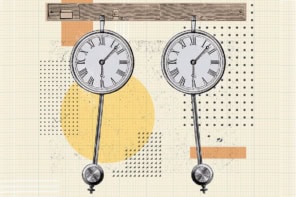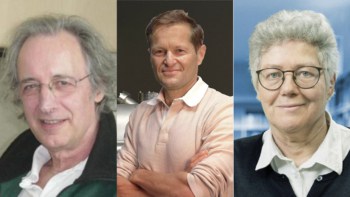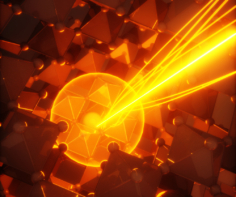
Spurred on by their work on building one of the world’s most accurate atomic clocks from strontium–87 atoms, researchers in the US have now discovered that “forbidden” collisions can occur between these atoms.
Strontium–87 atoms belong to a class of objects known as fermions and according to quantum physics; fermions cannot occupy the same energy state and location in space at the same time. Fermions in identical energy states are therefore not meant to collide. Collisions perturb the internal energy levels of the atoms, and therefore such fermions should have very stable energy levels.
This property was exploited last year by Jun Ye and colleagues at NIST and JILA, who built an atomic clock based on around 2000 ultracold strontium atoms trapped in an optical lattice of overlapping infrared laser beams. The atoms are bathed in light from a separate red laser at a frequency that corresponds to an atomic transition in strontium. This makes the light “lock into” the precise frequency of the transition and it thus oscillates between energy levels, just like the ticking of a clock.
Tiny shifts appear
But, now Ye and colleagues have seen tiny shifts in the frequencies of the clock ticks caused by collisions between atoms.
The researchers are able to measure these tiny interactions because their clock is extremely precise (accurate to about one part in 1016, or neither gaining or losing a second in more than 200 million years). They do this by exciting the transition between clock states and measuring the frequency shift of the atomic transition as the density of the atomic ensembles in the optical lattice is varied.
More precisely, Ye’s team measured the frequency shift as a function of temperature, the excitation probability and the alignment of the probe laser beam to investigate the origin of these interactions. The scientists discovered that when the laser-atom interaction introduces a very small degree of inhomogeneity, previously indistinguishable fermions become slightly distinguishable. The fermions are no longer identical and collisions can occur.
No longer identical
Gretchen Campbell of JILA explains that at the beginning of the measurement, all of the atoms are in the same atomic state. However, during the transition from the ground state to the excited state, using a laser pulse, light-atom interactions are not uniform across the entire atomic sample. This means that different atoms are excited at slightly different rates. These atoms are therefore no longer identical.
The probability that atomic collisions will occur depends on how the atoms in the ensemble are excited. Indeed the JILA team determined that when the atoms are excited to roughly halfway between the ground state and excited state, the collision-related shifts in the clock frequencies drop to zero. The technique has allowed the team to improve the accuracy of its clock by 50% so that it now neither gains or loses a second in more than 300 million years.
As well as improving atomic clocks, the study also helps clarify how fermions interact, which is of fundamental interest, Campbell told physicsworld.com.
The team now plans to confine the strontium atoms in a 3D optical lattice, as opposed to just a 1D one. “The collision-enabling mechanism can be strongly suppressed in 3D,” said Campbell.
The research is published in Science.



